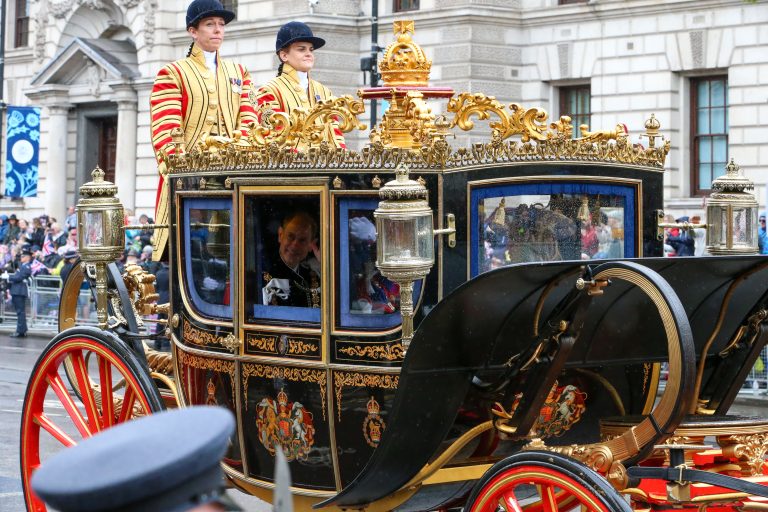

Ireland’s past is etched in stone, and few places capture its legendary grandeur like the Rock of Cashel.
Towering above the rolling green fields of County Tipperary, this ancient fortress is a monument to Ireland’s medieval kings, saints, and warriors. But it is more than just a relic—it is a place where myth and history collide, where the ghosts of high kings still seem to walk among the ruins.
From its legendary foundation to its tragic fall, the Rock of Cashel has stood as a witness to power, faith, and conquest, a place where pagan Ireland met Christian Ireland, and where stone walls tell stories older than the written word.
Why Is the Rock of Cashel So Famous?
The Rock of Cashel is famous as the seat of the High Kings of Munster, a site where legend meets history. It is believed to be the place where St. Patrick converted King Aengus to Christianity, marking a pivotal moment in Irish history. Its dramatic location on a limestone hill gives it an almost otherworldly presence, visible for miles across the Tipperary landscape. Today, its ruined cathedral, round tower, and breathtaking Celtic crosses make it one of Ireland’s most iconic historic sites.
The Rock of Cashel: A History Written in Stone
What Was the Rock of Cashel Used For?
Long before it became a religious stronghold, the Rock of Cashel was the seat of Munster’s kings, a place where battles were fought, alliances were forged, and Ireland’s fate was shaped. By the 12th century, it had transformed into a center of Christian power, with the construction of Cormac’s Chapel and the Cathedral. The site remained a religious stronghold until 1647, when Cromwellian forces stormed it, massacring its defenders and leaving it in ruins.
What Is the Legend of the Rock of Cashel?
One of the most famous legends says that the Rock of Cashel was formed when the Devil took a bite out of the Slieve Bloom Mountains and spat it out, landing where it stands today.
Another tale links it to St. Patrick, who baptized King Aengus of Munster here, accidentally piercing his foot with a staff during the ceremony—but the king, thinking it was part of the ritual, bore it in silence.
Is the Rock of Cashel Worth Visiting?
Absolutely. The Rock of Cashel is one of Ireland’s most striking and historically rich landmarks, with breathtaking medieval architecture and panoramic views of the countryside.
The round tower, Gothic cathedral, and Cormac’s Chapel hold centuries of history within their crumbling stone walls. Whether you’re a history buff, a photographer, or just looking for an unforgettable Irish experience, this is a place that will leave you in awe.
Rock of Cashel Tickets and Visitor Information
Rock of Cashel Opening Hours
- Open daily
- Hours vary seasonally; typically 9:00 AM – 5:30 PM
Rock of Cashel Tickets
- Adult: ~€8-€10
- Student/Senior: ~€6-€7
- Family (2 adults, 2 children): ~€25
(Prices subject to change; check official website for updates.)
How Long Does It Take to See the Rock of Cashel?
A typical visit takes 1 to 1.5 hours, but history lovers could easily spend 2-3 hours exploring its ruins and surrounding landscape.
10 Facts About the Rock of Cashel
- It was once the throne of the Kings of Munster before becoming a church site.
- It is believed to be the site where St. Patrick converted King Aengus to Christianity.
- Cormac’s Chapel is one of Ireland’s oldest and finest examples of Romanesque architecture.
- The round tower dates back to the 11th century, making it nearly 1,000 years old.
- The Devil’s Bit legend claims that the rock was spit from the Slieve Bloom Mountains.
- It was attacked and burned by Oliver Cromwell’s forces in 1647, leading to the massacre of thousands.
- The Rock of Cashel offers breathtaking panoramic views of the Tipperary countryside.
- It was abandoned by the church in the 18th century and has remained in ruins ever since.
- The site still contains ancient Celtic crosses, some of which date back to the early medieval period.
- Despite its ruined state, it remains one of Ireland’s most visited and photographed historic sites.
What Is the Oldest Grave at the Rock of Cashel?
The oldest known grave is believed to be that of King Cormac Mac Cárthaigh, the ruler of Munster who built Cormac’s Chapel in the 1100s. Many medieval bishops and nobles are also buried here, their graves weathered by centuries of Irish rain.
Rock of Cashel Map and Photos
For those planning a visit, maps and visitor guides are available at the entrance. Rock of Cashel photos showcase its majestic ruins, towering round tower, and breathtaking views, making it one of the most photogenic spots in Ireland.
What Does Cashel Mean in Irish?
The word Cashel (Caiseal) means “fortress” or “stone ringfort” in Irish, reflecting its original purpose as a defensive stronghold.
Discover More of Ireland’s Historic Wonders
If you loved learning about the Rock of Cashel, you’ll want to explore these hidden gems:
- Ireland’s Ancient East: Where Myths, Legends, and History Collide
- Hidden Gems of Ireland’s Ancient East You Need to Visit
- Slane Village: The Jewel in Ireland’s Ancient East
- The Top 7 Places to Visit in County Tipperary
Final Thoughts: A Fortress of Time
The Rock of Cashel is more than just a ruin—it is Ireland’s history carved in stone, a place where high kings ruled, saints walked, and myths were born. Whether you come for the views, the legends, or the sheer magnitude of its past, one thing is certain:
The Rock of Cashel is a place you’ll never forget.





4 thoughts on “The Rock of Cashel: Ireland’s Crown Jewel of History and Myth”
Comments are closed.